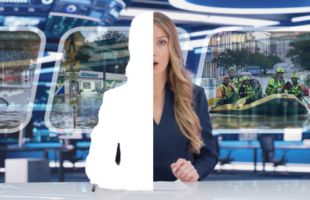Hong Kong– PCCW Global, the international operating division of HKT, Hong Kong’s premier telecommunications service provider, and Ideal Systems, Asia’s largest broadcast and media systems integrator, have successfully delivered the world’s first live 360° and 3D multi-camera coverage of the 2017 Cathay Pacific/HSBC Hong Kong Sevens with the support of Now TV, the official host broadcaster of the event, providing viewers with a totally immersive virtual reality (VR) viewing experience.
PCCW Global’s expertise in live mega event management and new media technology delivery, together with Ideal Systems’ broadcast solutions and virtual reality expertise, enabled the team to deliver this complex solution in less than six weeks from project initiation.
The collaboration involved Ideal Systems delivering the content acquisition using a number of pitch-side Nokia OZO 360° cameras*. These cameras provided a UHD IP signal which was delivered over HKT fiber to Nokia servers in the control room, to facilitate live stitching from each of the cameras’ eight 2K lenses to create multiple stitched 3D UHD streams. These 360° audio and video streams were switched and passed through to the Harmonic Electra VS encoders for delivery to the PCCW Global media delivery network. Six streams were routed from the stadium for live distribution by Now TV to consumers’ mobile devices, PCs and VR headsets, including Samsung Gear VR, HTC Vive, Zeiss VR One Plus and Google Cardboard via YouTube 360.
The challenges of real-time live VR streaming compared to traditional TV revolve around the complexity of dealing with data rates which are significantly larger and more demanding on the delivery networks – with close to 6 Gbps of uncompressed video coming from each OZO Live Server. By way of comparison, reports from Broadband Forum suggest that even basic VR video requires 17 times the bandwidth of normal HD video.
From Ideal Systems’ side, the project involved its live production teams for the on-site set up and live “stitching and switching” production. It also involved Ideal Systems’ software development department, which developed and published the downloadable apps utilizing the Nokia OZO API for the VR headsets and provided onsite network security and publishing platforms.







